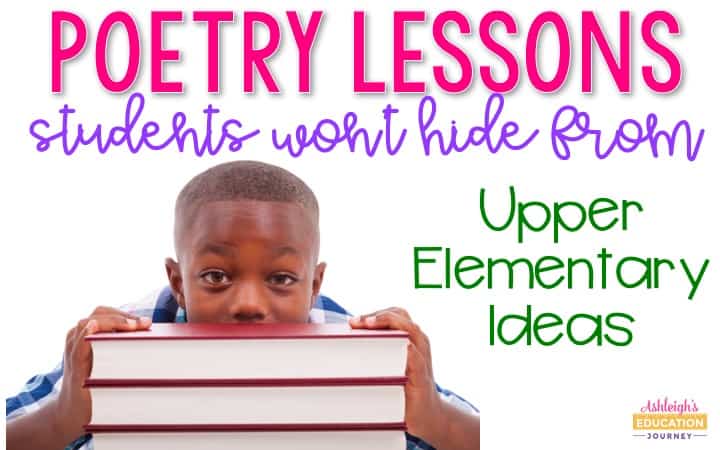
Teaching poetry can be a rewarding experience! Most upper elementary students love learning about poetry. It’s new, different, and a genre where all students can find a style of poetry they enjoy.
The easiest place to begin teaching poetry is to simply read poetry to students, whether it is of a silly or serious variety. Don’t worry about analyzing and annotating the poems. Instead, just read for enjoyment. Too often we jump right into structure, rather than the experience of listening to good poetry. The image below shares a few of my favorite anthologies. I try to read a large variety of poems to make sure all students find something they can connect with.

When I begin teaching poetry, I like to explicitly teach the different parts of a poem: lines, stanza, rhythm, rhyme, and repetition as the basics of poetry structure. Understanding the basic format, helps in poetry comprehension.
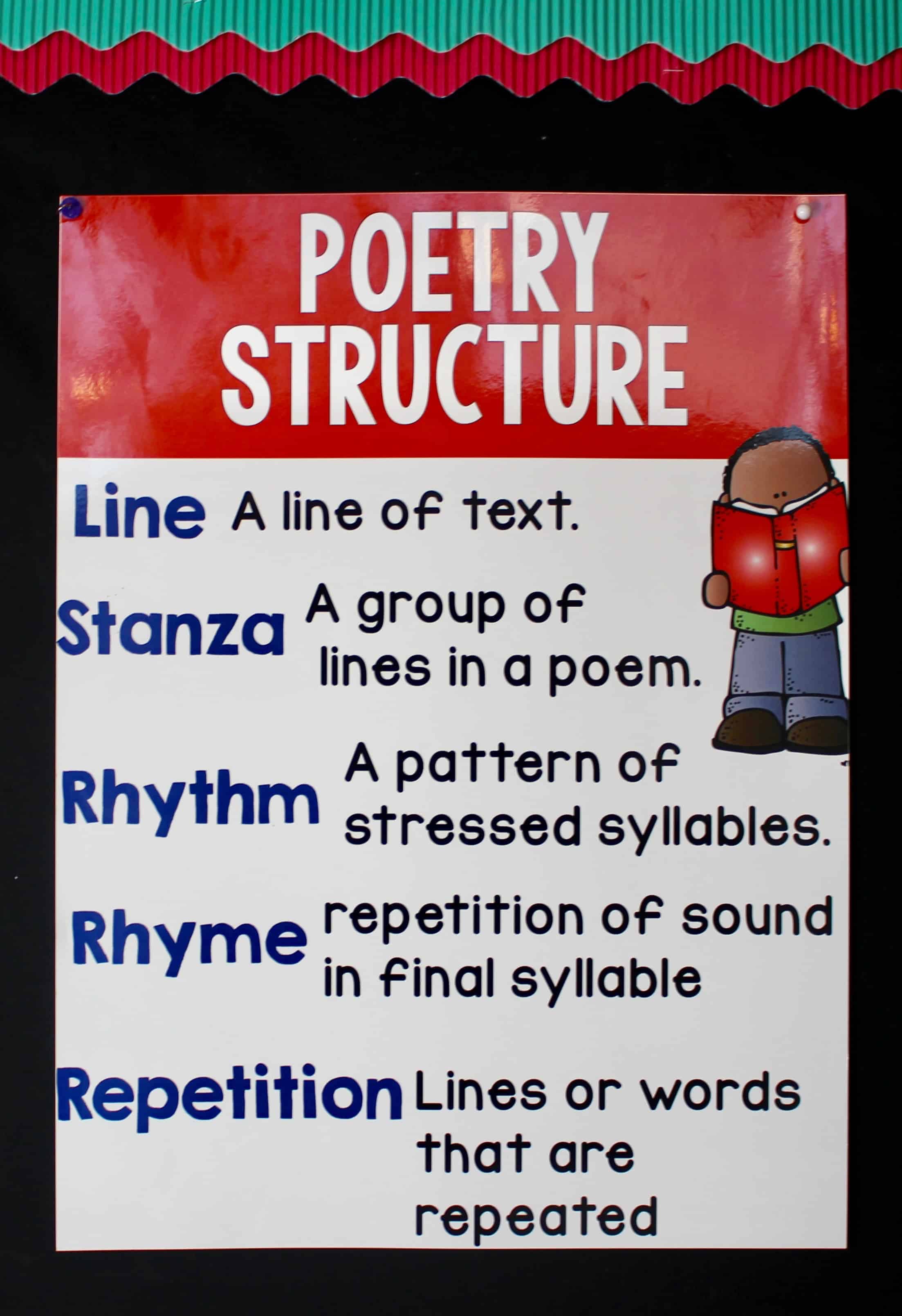
It’s important to teach students how to read a poem, because they should read poetry differently than a traditional prose. Students should first read the poem slowly. Reading a poem slowly is the best way to ensure that the poem will be read clearly and understood. It is also important for students to read in a normal, relaxed tone of voice. Students know that poems are written in lines, but pausing at the end of every line will create a choppy effect and interrupt the flow of the poem’s sense. Students should pause only where there is punctuation, just as you would when reading prose.
Teaching Poetry – Mini Lessons
Once students are comfortable reading poems and have an understanding of the elements of poetry, you can begin teaching poetry comprehension. I use my Reading Unit 5 for all of the poetry lessons. In those lessons, students practice reading and answering explicit and implicit comprehension questions about various poems. It also has students work with the different elements and forms of poetry.
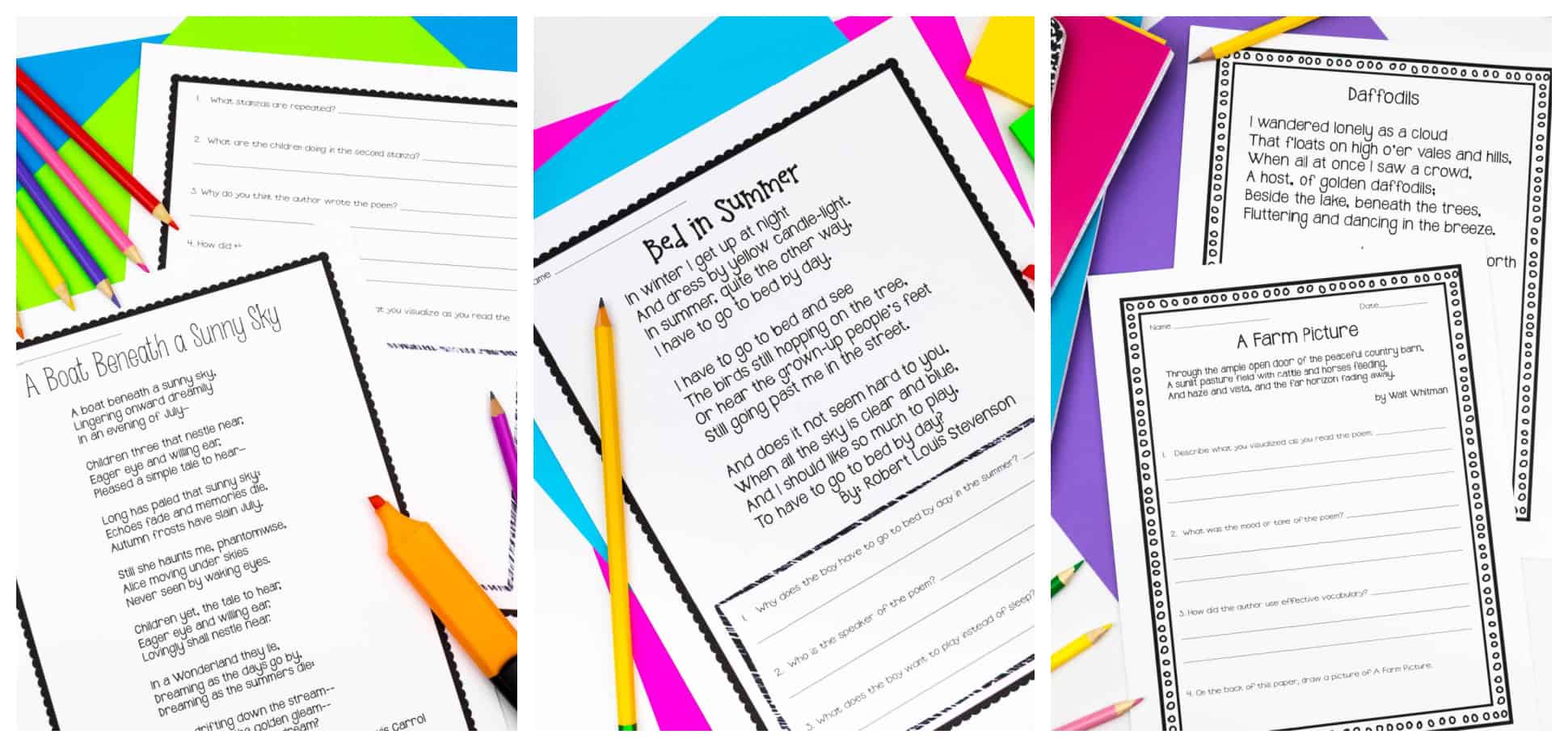
Teaching Poetry With Paired Passages
Another great idea for teaching poetry is to incorporate paired passages. I use paired passages to give students rigorous analyzing poetry practice. Students receive two poems. Then, they annotate the two poems with questions and observations and identify more complex vocabulary.

In the next portion of the activity, students answer text dependent questions in a multiple choice format for both poems. These questions are all explicit questions whose answers can be found directly in the text. You can even have students highlight or underline where they found the answer to the question.

In the next portion of the teaching poetry assignment, students identify and explain examples of figurative language in both poems. Then, students answer questions that require them to infer and draw conclusions.

In another portion of the paired passage activity, students answer paired comprehension questions where they use both passages to answer high level thinking questions. Students should support their answers with text evidence.

When I use these poetry paired passages, I don’t try to have students complete all parts of the assignment in a single class. Instead, I break it apart into multiple days. You can find the paired passages here.
Teaching Poetry Through Novel Studies
One of my favorite strategies for teaching poetry is through novel studies. I have added each of the novel studies to my Free Resource Library! To access the resources, simply sign-up for my newsletter. You can sign-up here or on the sidebar of the blog.
Love That Dog
One group is reading Love That Dog, which is the easiest of the four books. The book is a collection of journal entries written as poems, and is a great text for teaching poetry. The journal belongs to Jack, a young boy in Miss Stretchberry’s class. Jack doesn’t like poetry-writing it or reading it. With the help of Miss Stretchberry, he begins to write poems of his own. Slowly, he realizes that his brain isn’t “empty” and that he can write poems.
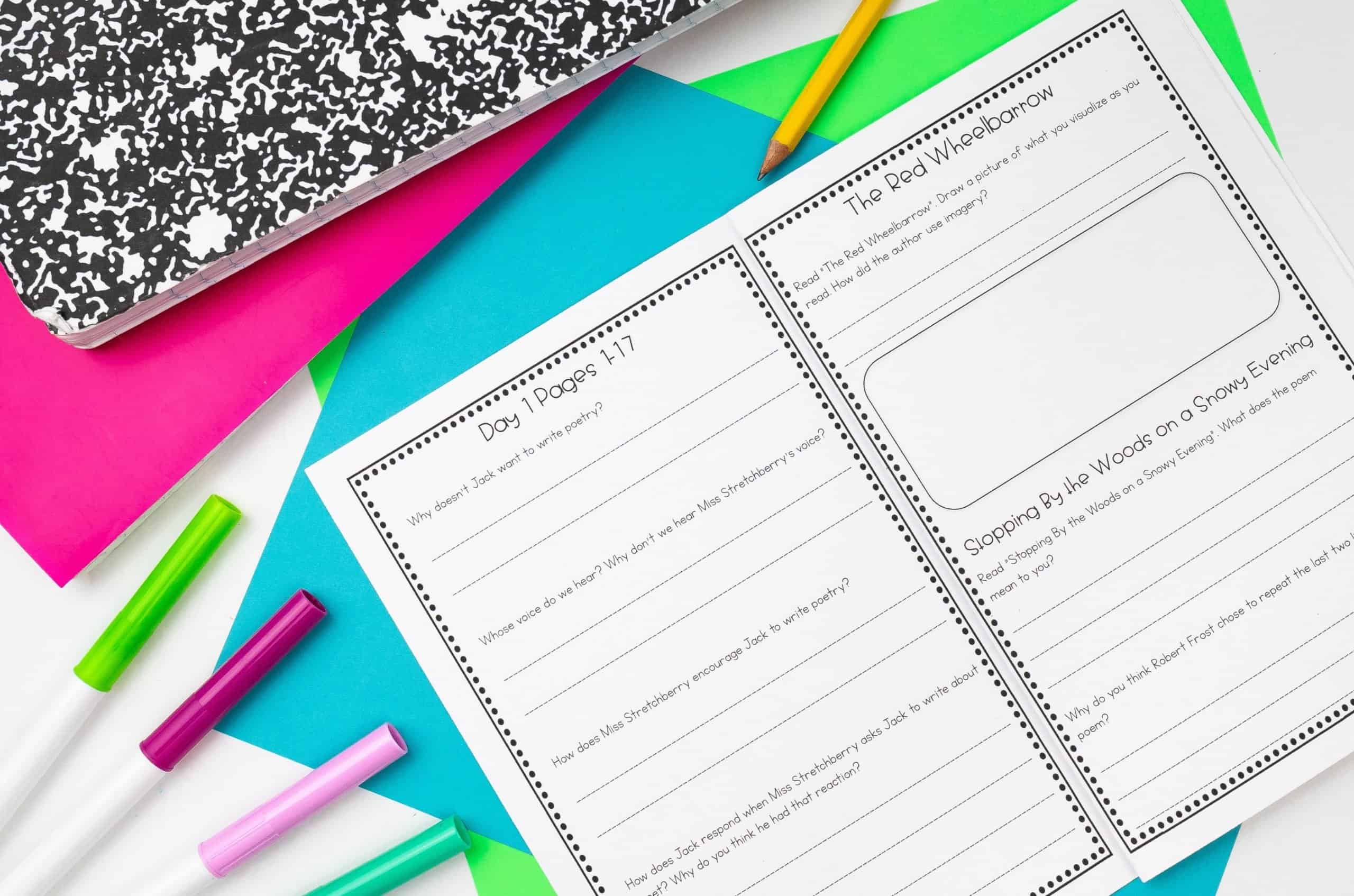
May B.
Another one of our novels is May B. which is a historical fiction novel. The setting of the book is the late 1800s on the east Kansas prairie. May B’s parents need money, and their plan is to send their daughter to work at a homestead 15 miles away. She isn’t happy about going and she doesn’t like the family she’s working for.
She’s lonely when she begins her job with the Oblingers, but she becomes truly lonely when she’s abandoned at their home. She knows she has to fend for herself and learn how to live in alone. To top her problem off, winter is coming, and she’s running out of food. A side plot of the novel is that May has a learning disability and struggles greatly with reading.
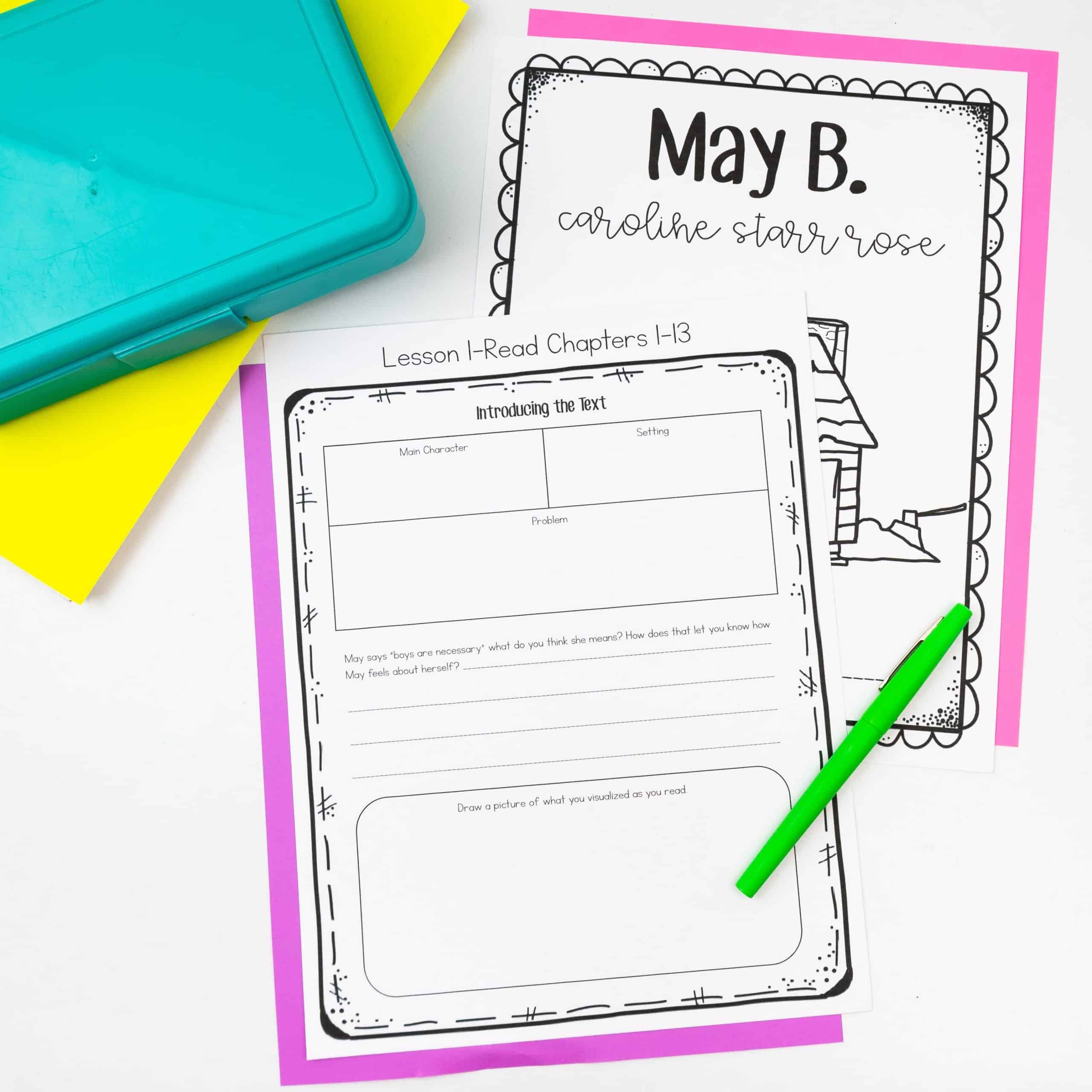
Hidden
The all-time student favorite novel is Hidden. When Wren Abbott and Darra Monson are eight years old, Darra’s father steals a minivan. He doesn’t know that Wren is hiding in the back. The hours and days that follow change the lives of both girls. Wren finally manages to escape from the garage where she is hiding.
Years later, in a chance encounter at a summer camp, the girls face each other for the first time. They can finally learn the truth of the event and the activities following the kidnapping. The book is told from alternating viewpoints from Wren and Darra. This is definitely my favorite novel for teaching poetry.
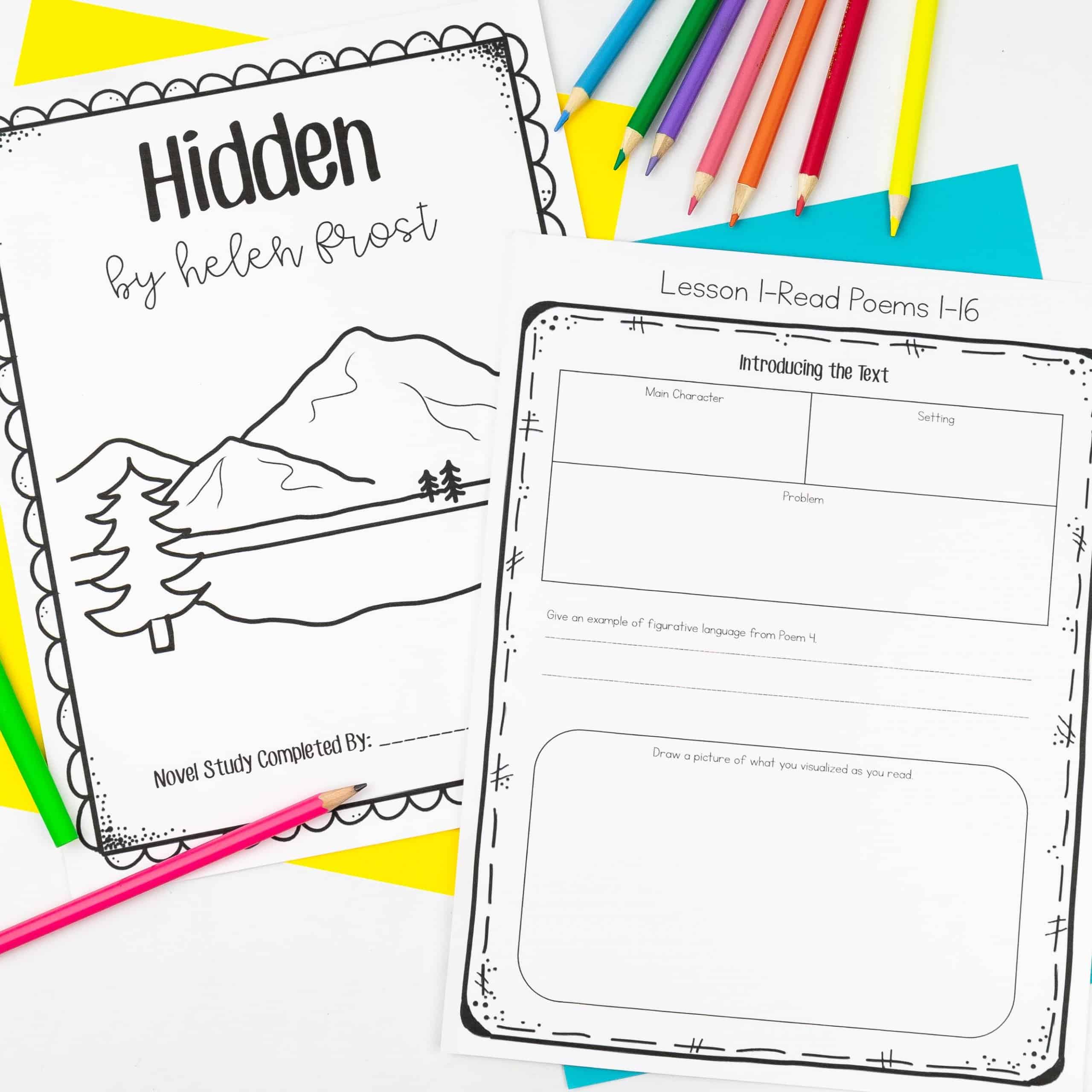
Inside Out and Back Again
The most challenging, text is Inside Out and Back Again. I love this book, because it address so many social studies standards, while telling a great story. Inside Out & Back Again recounts the fleeing of Vietnam by Ha and her family and their immigration to the United States of America.
They are sponsored by a Southern farmer named Mr. Johnston, who helps the family to settle in Alabama. In Alabama, Ha and her family receive mixed reactions from their new neighbors. While many are friendly and welcoming, others are not. At school. Ha is bulled by a pink-colored boy who takes every chance he can to make fun of Ha. Slowly, all of the neighbors come around and warm up to Ha and her family, and the family begins to feel welcome at last.
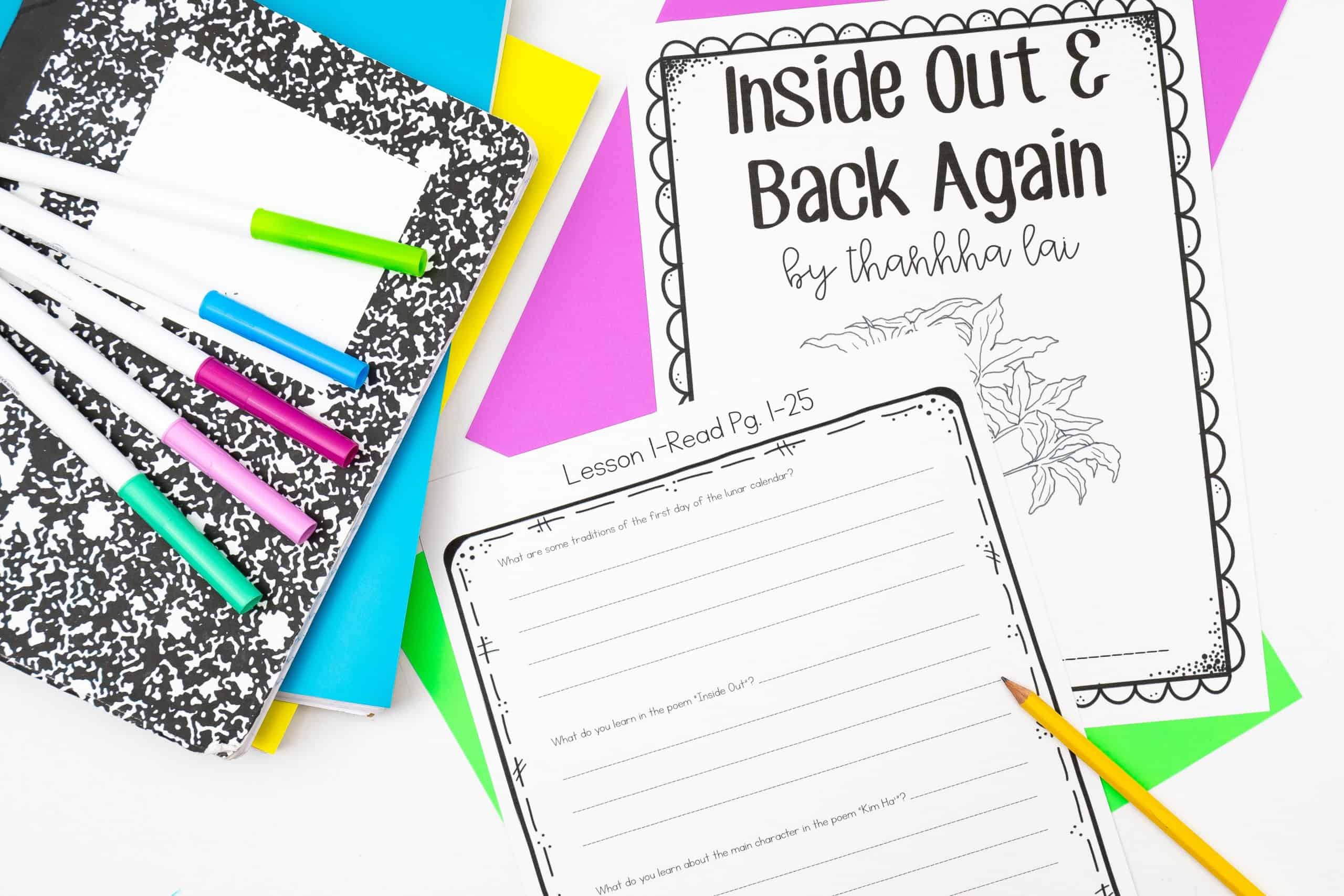
Teaching Poetry Through Writing Poetry
I like to extend my poetry unit with something particularly fun through writing. Students love this Types of Poetry Mini Unit. I included a poster with an explanation and example of ten different types of poems: acrostic, biographical, color, cinquain, color, concrete, couplet, diamante, free verse, haiku, and limerick. For extra support, there are also pictures of the poems my students wrote that can be used as an example and a template for creating a small poetry book.

The poetry booklet is a fun a culminating project to any poetry unit. Students have fun, and it’s nice to have examples of their written poetry in one place.


Hopefully, this has given you a few new ideas for teaching poetry to upper elementary students! If you want to read more about how I teach reading, be sure to check out this post!



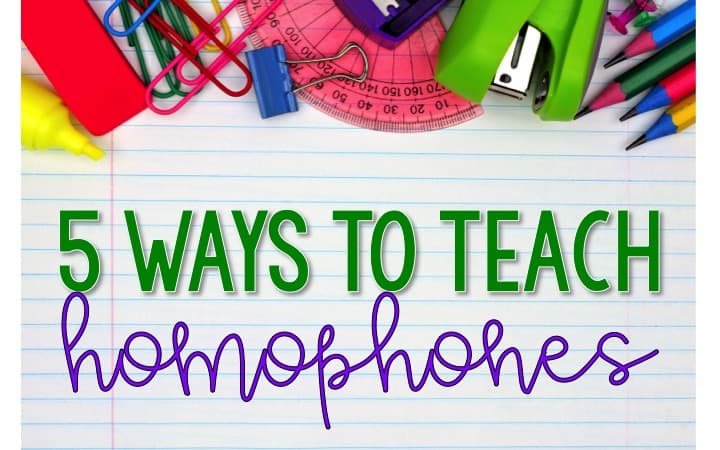
Hello Ashley…
Thank you for sharing! Poetry does invite students to speak up, share and engage in the most authentic, personal manner, and a lot of times, artfully as well.
I will surely try this in my class.
I would love to use this lesson as is. How long does it take your groups to finish their novel study together? How much time do you give them each day? These are the parts of group boos studies I struggle with!
Thank you for sharing!
I’ve been looking for more poetry read-aloud books for my 4th graders. I’m excited to see your suggestion of Poems to Learn by Heart. Thanks for including that in this post! Great ideas 🙂
Are these resources available? I am a new teacher starting a novel unit on Hidden and would love this resource!
Yes! It’s a part of Reading Unit 5.